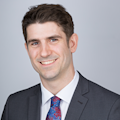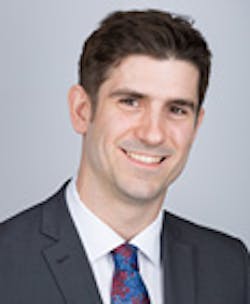The two major water weeks in Europe and Asia are joining forces to report on the progress of the nine Amsterdam Agreements set out earlier this month.
Wow. What a crazy few months. Since June, I’ve been to Shanghai, Mexico City, São Paulo, Porto and last but no means least, Amsterdam. For the latter, I was invited to moderate the Opening Ceremony of the Amsterdam International Water Week (AIWW). This included introducing the World Bank, European Commission, two major award ceremonies and even welcoming Dr Samuel Sarphati back from the afterlife who made a brief appearance to talk about his legacy in Amsterdam. Yes, you heard that correctly. This was then concluded with the Prime Minister of the Netherlands, Mark Rutte, who arrived promptly to open the event. “More and more people around the world are experiencing the destructive power of water,” he said. Speaking to a crowd of nearly 1000 and shaking hands with the PM and other keynote speakers was definitely a career highlight for me and a reflection that (some) country leaders are now taking water seriously.
Had there been time in the packed agenda, I would have asked the country’s leader to “have a word” with my Prime Minister the next time he’s in the UK in the hope that his passion and interest in water would pass over. Can you imagine Theresa May at the opening ceremony of a UK-based water sector event? Me neither.
Across the course of the week, a total of nine “Amsterdam Agreements” were signed, to bring together companies, institutions and authorities in the water sector. This included the “Blue Deal” – all 21 Dutch regional water authorities will set up an international program to improve flood protection and access to water worldwide. AIWW also signed a partnership with the Singapore International Water Week. Asia’s leading show in 2018 will be used as a pit-stop in the two-year journey until the next AIWW. Progress will be reported and discussed from the nine agreements.
It’s interesting to see two events, which in the past could be called rivals, coming together. I’m a huge fan of the setting of clear goals and addressing progress during the next event. There are too many generic water events now that simply add further debate, often unnecessarily, with no real breakthroughs or concrete solutions being adopted.
One of the themes from the event was “achieving real breakthroughs” which is spot on. We know that globally the collective engineering know-how and expertise exists to solve any water problem –the challenge lies in pushing the solutions through the myriad of political roadblocks while finding the money to do so.
While visiting multiple companies during the Aquatech exhibition side of the event, there was a clear indication where the innovation is coming from. From the membrane companies, there was less talk on the membrane, product innovation but more of a focus on the software side. Dow, inge and Lanxess all centred their discussions and press briefings around software modelling. By modelling how the membrane units fit within a water treatment plant, several variables can be changed, including feedwater type and flow, to see how this will impact the membranes and their associated energy usage. With the market being so competitive, it’s forcing manufacturers to showcase technical expertise more than just the sale of the product. Support is required before, during and after in a more consultative approach.
Now that the event “silly season” has come to an end, it’s time to reflect on another busy year before it cranks back into motion again in January. I hope you’ve lapped up the international event itinerary and variety this industry brings as much as I have in recent months. Enjoy the issue.
More Water & WasteWater International Archives Issue Articles
About the Author

Tom Freyberg
Tom Freyberg is an experienced environmental journalist, having worked across a variety of business-to-business titles. Since joining Pennwell in 2010, he has been influential in developing international partnerships for the water brand and has overseen digital developments, including 360 degree video case studies. He has interviewed high level figures, including NYSE CEO’s and Environmental Ministers. A known figure in the global water industry, Tom has chaired and spoken at conferences around the world, from Helsinki, to London and Singapore. An English graduate from Exeter University, Tom completed his PMA journalism training in London.

